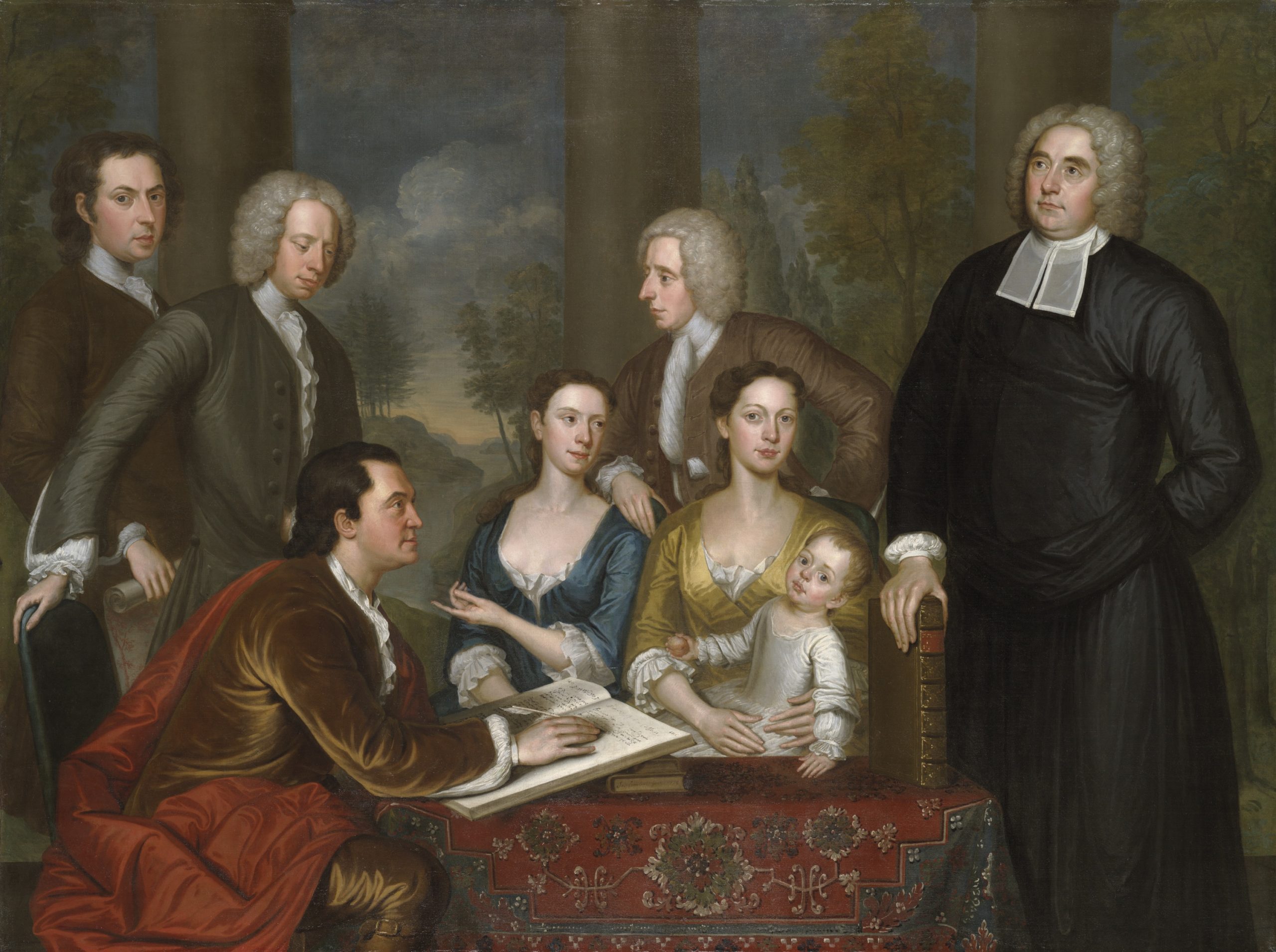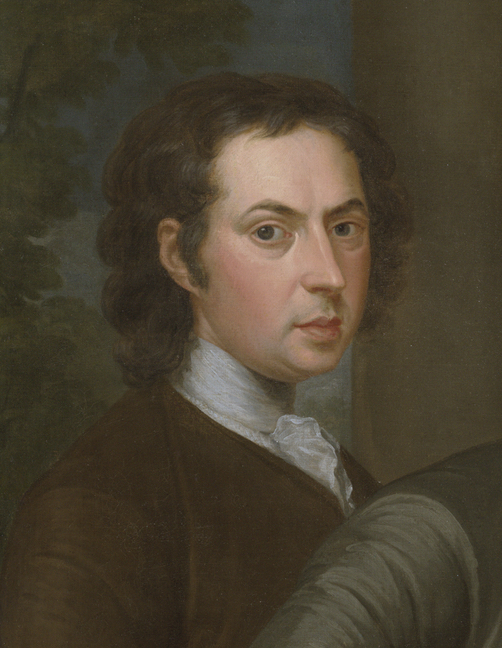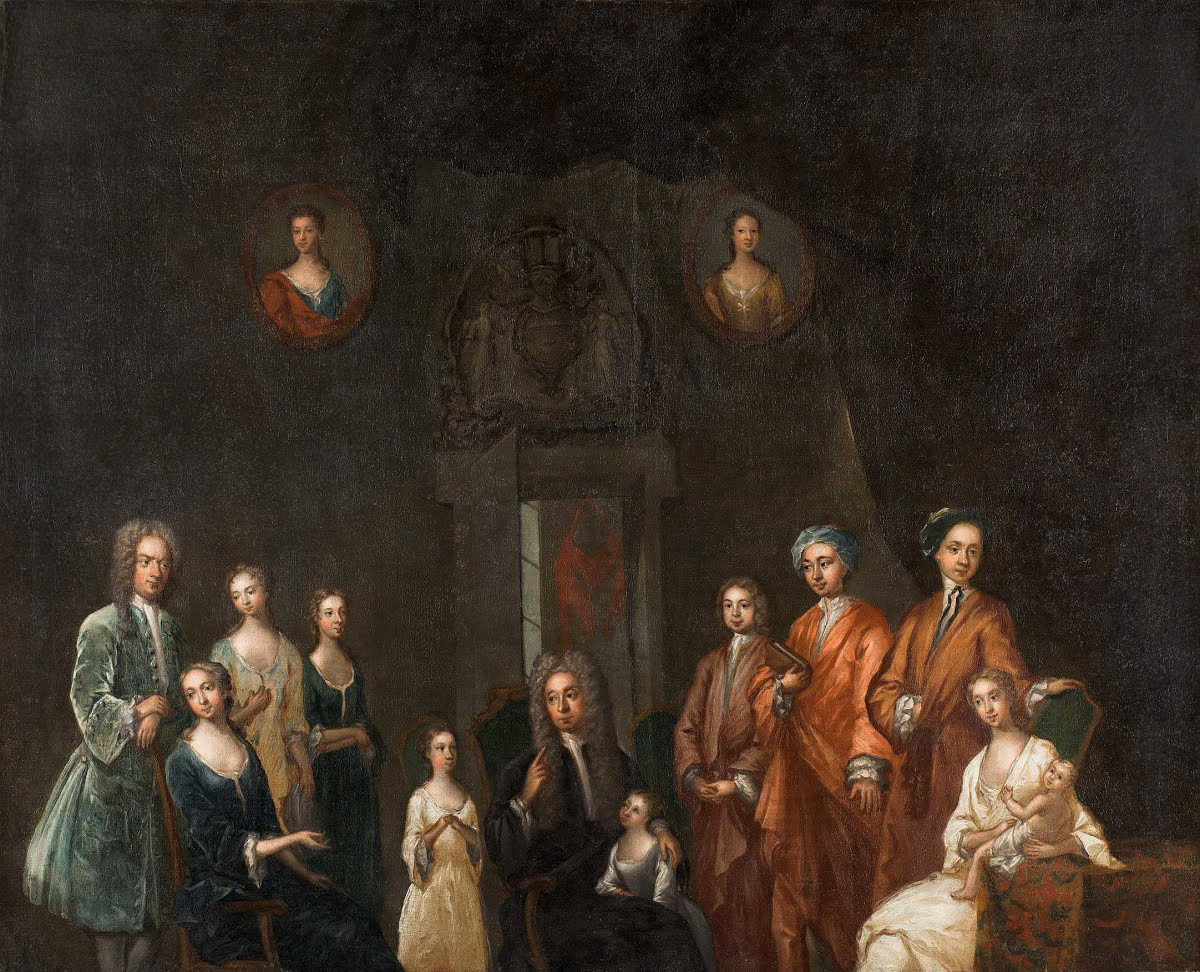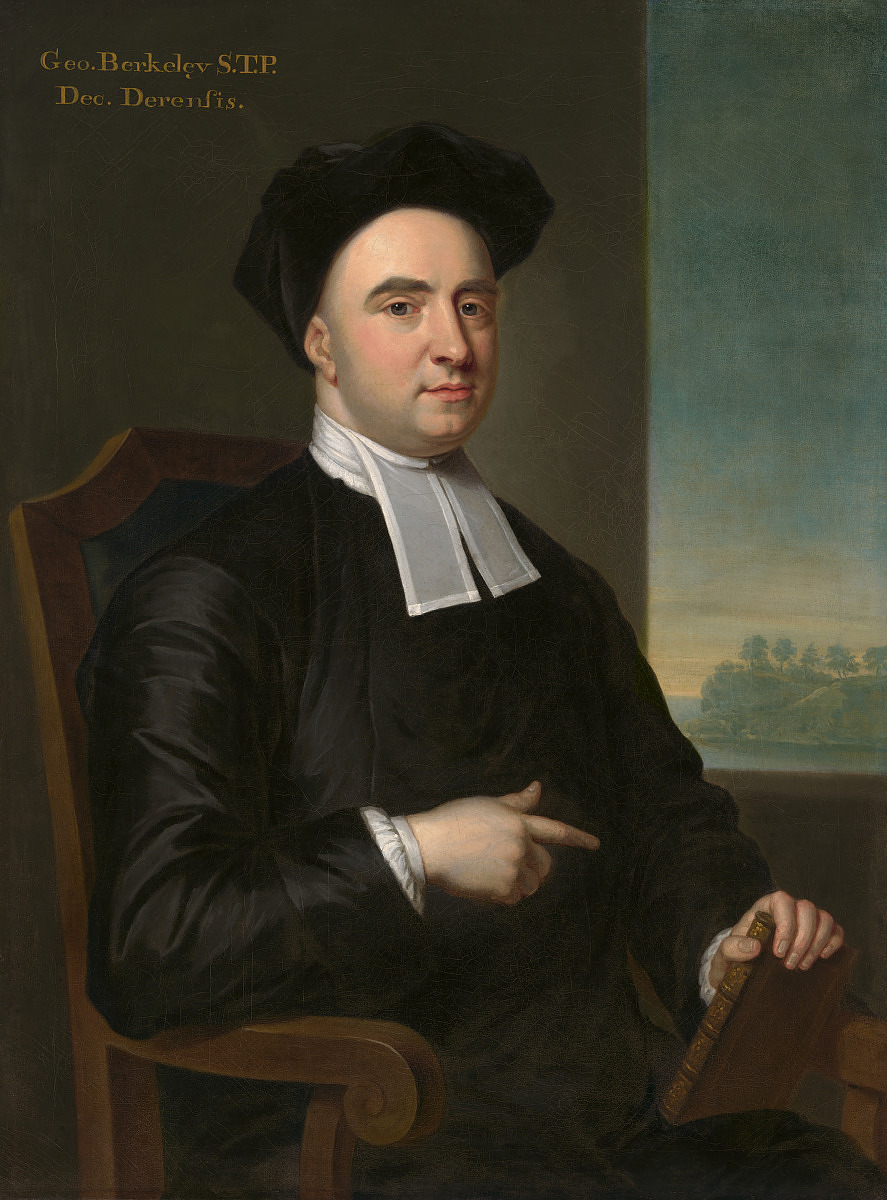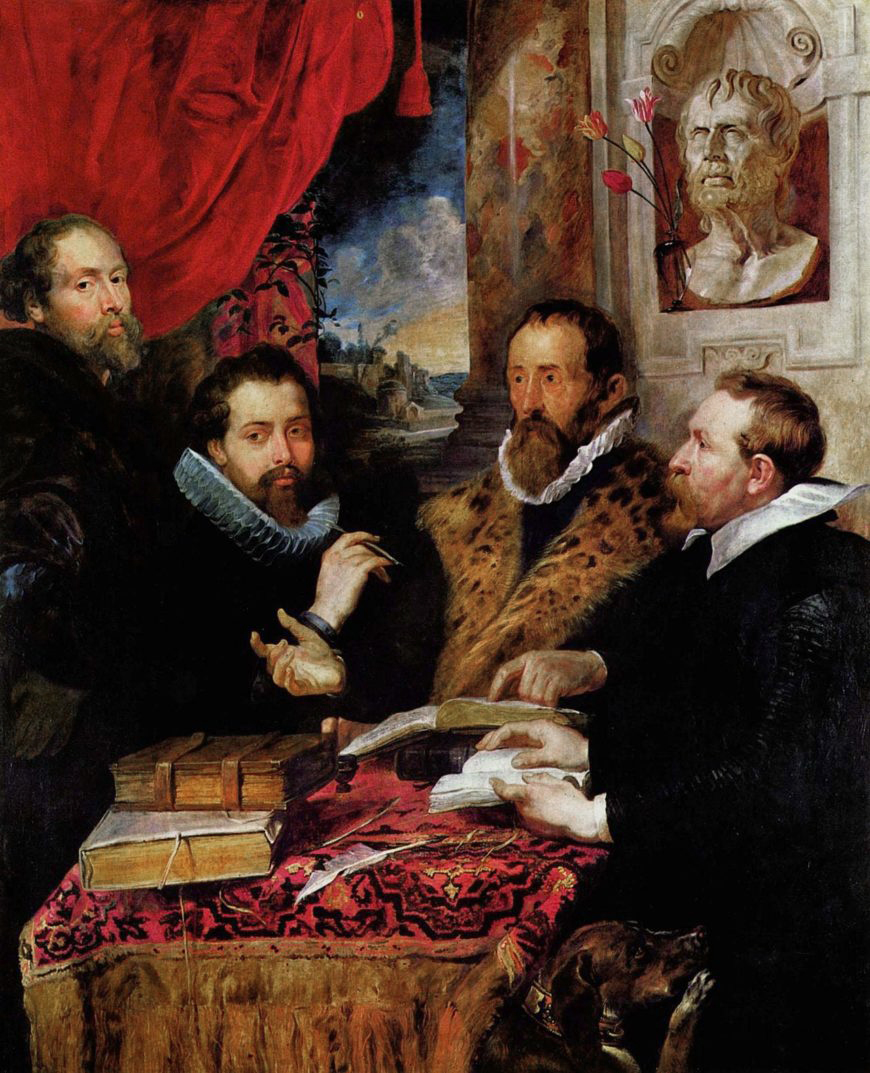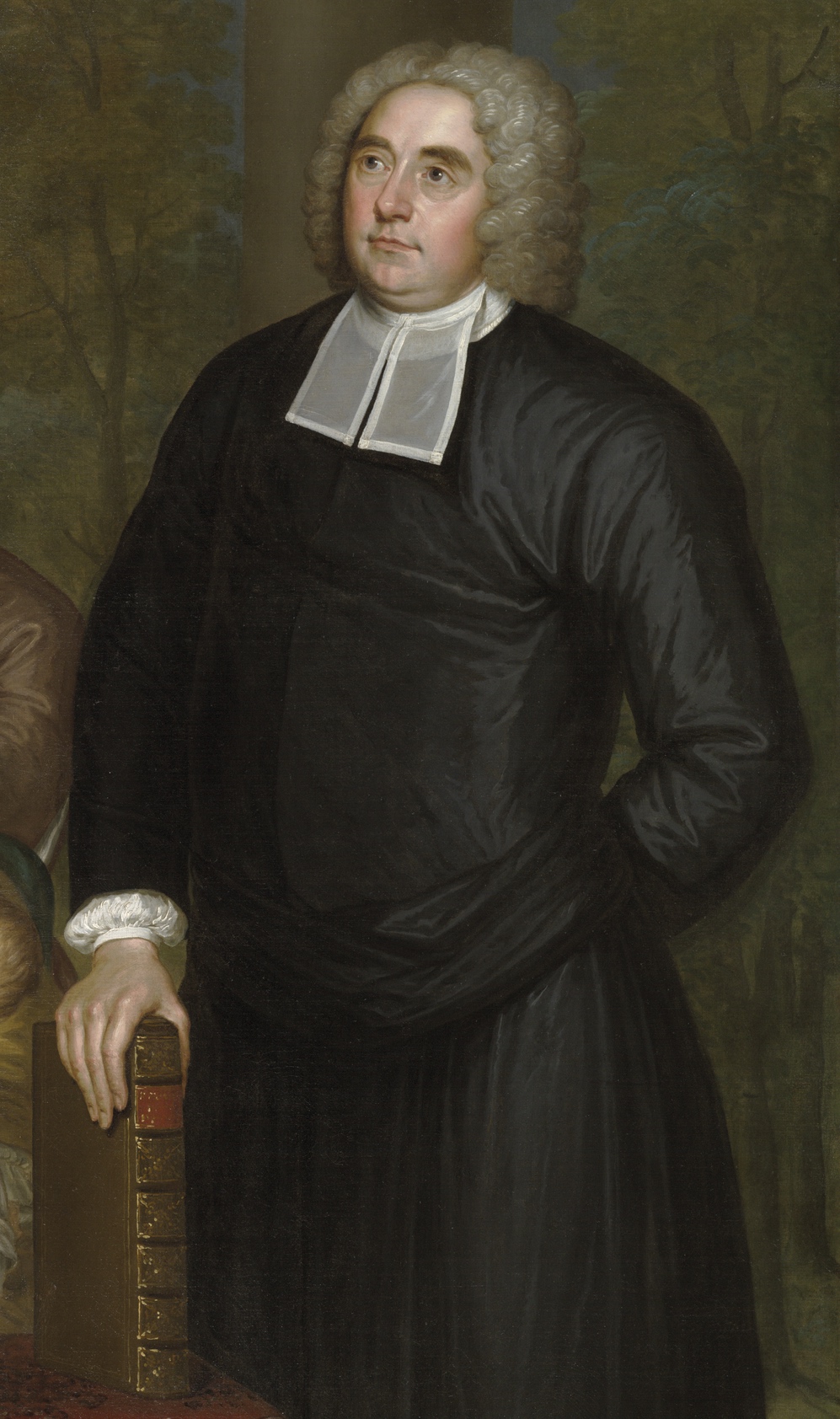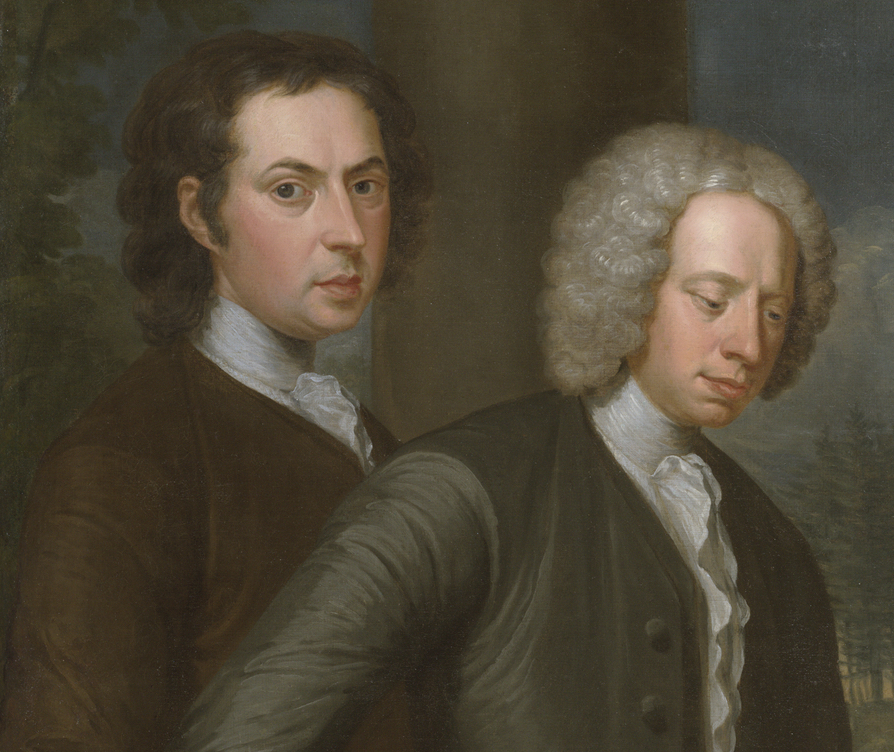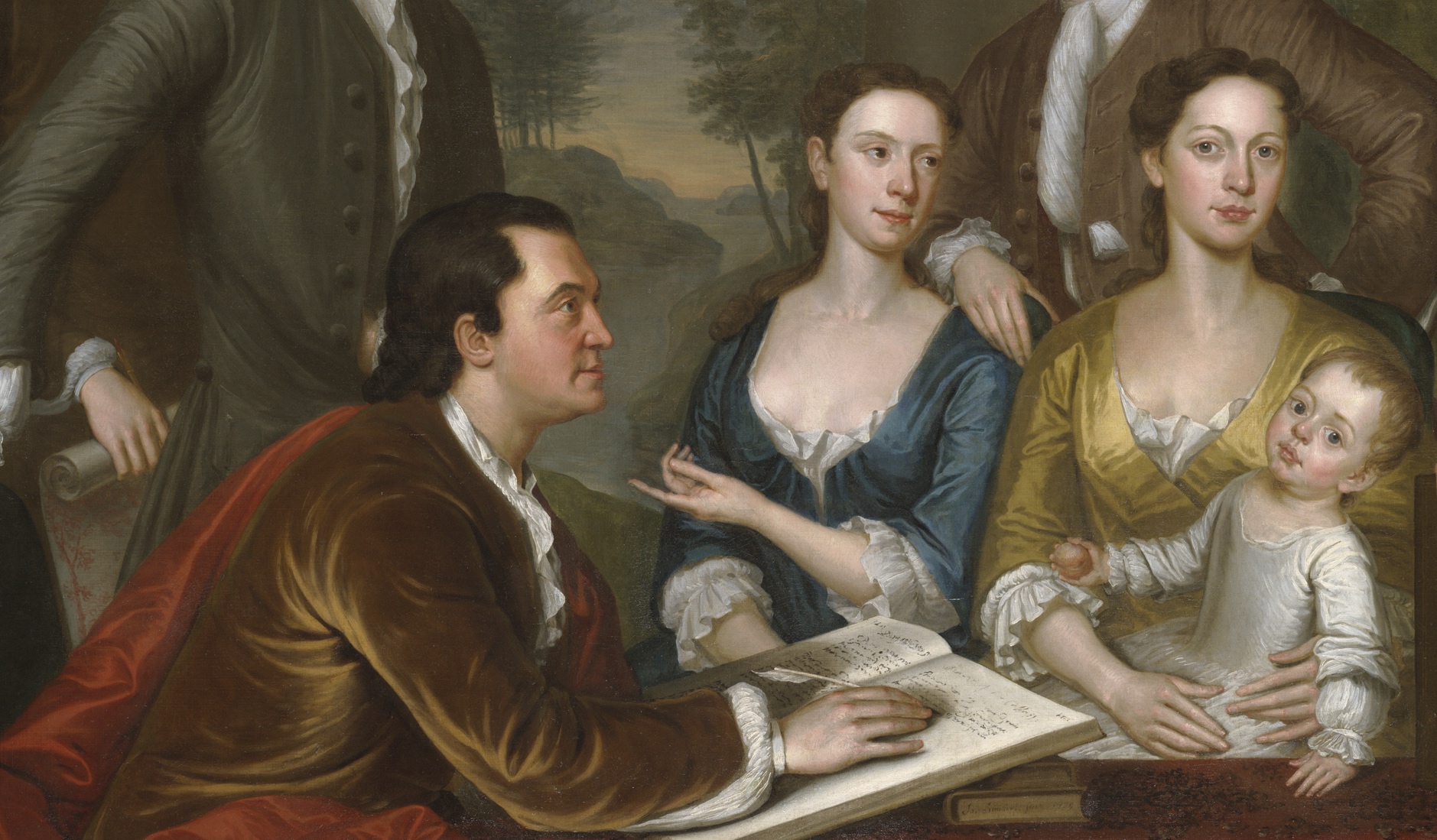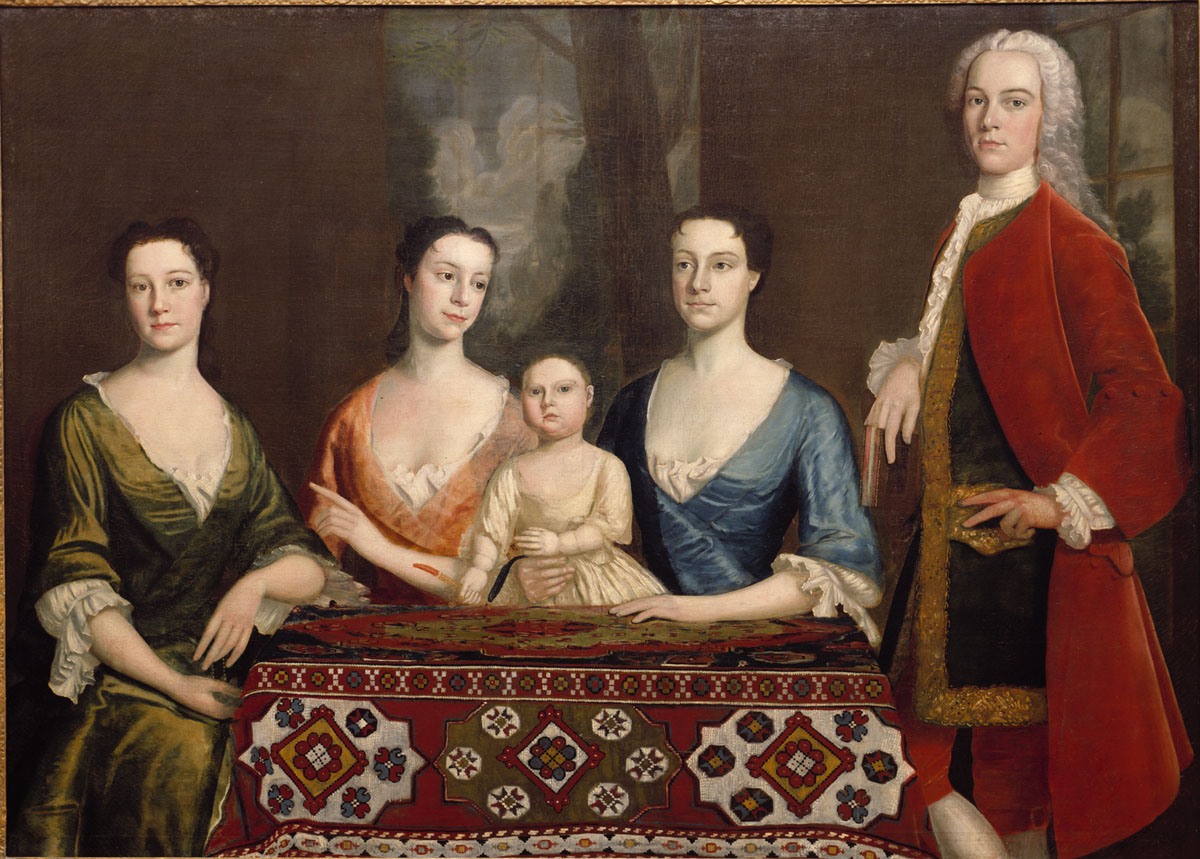This was a period of great learning for Smibert. He spent a month in Paris, almost a year in Florence, and more than six months in Rome. Florence in particular was fruitful for the artist. Smibert purchased more than 300 works of art while there: 45 paintings, 250 drawings, 6 pastels, and at least one cartoon (not a comic, but a full-size study for a painting). It was also in Florence that the artist met the Irish philosopher George Berkeley. In fact, this fortuitous meeting would echo throughout the majority of Smibert’s life to come.
Smibert returned to London in 1722, overflowing with confidence. His time abroad had been wonderfully fruitful; he had immersed himself in the art of Italy and had met many Britons on their own Grand Tour who would be in a position to aid his portrait career upon returning to Great Britain. For a period of six years—that is, from the summer of 1722 until fall of 1728, Smibert experienced modest success as a London portraitist. He was a moderately talented painter working in a city teeming with exceptionally talented artists. And so, hoping to be the only fish in a miniscule pond (rather than a small fish in a enormous pond), Smibert took a remarkable leap of faith. George Berkeley was there to provide the nudge that led Smibert from his London studio to the relative wilderness of the Americas.
And on to Bermuda (via Newport)
The years had been kind to Berkeley since he had first met Smibert in Florence. In 1724, Berkeley had been appointed Dean of Derry in Ireland, a religious post that provided an affluent salary of £1,500 per year (in contrast, Smibert earned £345 as a full time portraitist in 1725, and only £233 the following year). It was about this time when Berkeley began to plan on beginning a college on the island of Bermuda. In 1726 Berkeley was in London securing funding for this enterprise when he met Smibert, commissioned a portrait, and convinced the artist to join his “New World” adventure of starting a college in Bermuda. Smibert agreed, and was charged with lecturing on painting and architecture—subjects uncommon in eighteenth-century college curricula. Berkeley and Smibert departed on September 5th, 1728. They were joined by four other adventurous people: John James and Richard Dalton—who presumably were to teach and were described as “Men of Fortune” and “gentlemen of substance”—and Anne Forster (Berkeley’s new wife) and her traveling companion, a Miss Handcock.
The group arrived at their first destination, Newport, Rhode Island, in January 1729 and stayed there awaiting the £20,000 Parliament promised for the move to Bermuda and to begin the college. Unfortunately—or, perhaps, fortunately for Smibert—the funding from Parliament never came. Thus, rather than spending time in Bermuda—truly a distant outpost—Smibert instead went to Boston. Although small by European standards with a population of about 13,000, Boston was as bright and vibrant of a colonial town as there was during the first half of the eighteenth century. And Smibert was the most talented portraitist in Boston the moment he entered the city.
Finally . . . Boston and The Bermuda Group
Smibert immediately began to paint the economic and political elite of Boston, and his cosmopolitan style—particularly for a colonial audience—was unlike anything his clients had ever seen. His most famous painting—The Bermuda Group—was likely begun during his early time in the commonwealth of Massachusetts, and although it was supposed to return to England, it remained in Boston throughout Smibert’s career and served as an example of Smibert’s skill and ability as a portraitist. Although it may seem to be hyperbole to twenty-first-century readers, there was simply nothing else like it in the American colonies.
There are five men present. Dean Berkeley has been given the most prominent position in the composition. Standing to the side of the table rather than behind it, he wears the full-length black cassock of an Anglican priest, and the wide, dual-banded white clerical collar popular during the eighteenth century. He looks heavenward as if for inspiration, and his face has an expression of thoughtfulness. His right hand rests on an upright leather-bound book, a symbol for both his own education and the scholarship for which he was famous.
Whereas Berkeley wears his clerical attire, the other gentlemen wear garments of the highest London fashion—something that would have dazzled Smibert’s colonial audience. John Smibert can be seen on the opposite side of the composition. As is typical of an artist who includes their own image in a group portrait—see Raphael in The School of Athens or Diego Velázquez in Las Meninas—Smibert looks directly out of the picture at the viewer. He wears a fashionable brown jacket and white cravat, and wisps of grey hair speak to his age. He holds a rolled up sketch and paintbrush in his right hand.
The man who stands in front of him—identified as either John James or Richard Dalton—is also fashionably dressed. He wears a powdered wig, an unbuttoned grey jacket, and a white cravat. He looks downward to observe the seated John Wainwright. This figure is an interesting addition, for Wainwright was never a part of Berkeley Entourage. Instead, he was the patron who commissioned this portrait. As such, Smibert places him close to the picture plane, unobstructed by the table. He is shown in profile and seated facing Dean Berkeley, writing in an open book as if taking dictation. The fifth gentleman stands behind the two women and can be identified as either John James or Richard Dalton. He casually leans on the back of the chair and looks towards the left edge of the painting.
The women
The two women—Berkeley’s wife Anne Foster and her companion, Miss Handcock—sit behind a table that is covered with a beautifully rendered Turkish carpet (these objects, sometimes called Turkey work, were so expensive that they were seldom placed on the floor as rugs are today). Like their male counterparts, they wear fashionable garments with—for the time, at least—scandalously plunging necklines. The yellow and blue velvets they wear shimmer and radiate light. Foster looks at the viewer while holding her infant son Henry, and Handcock gestures with her left hand to the left side of the painting, while she herself looks to the right. Indeed, the gestures and glances of all the characters in this stage-like painting leads the viewer’s eye across the composition.
Comparing Smibert’s Bermuda Group with a near contemporary painting demonstrates why Smibert found such favor among the Boston elite. Robert Feke is most famous today for his portrait, Isaac Royall and Family, a composition that is visually indebted to Smibert’s earlier work. But whereas Smibert’s painting is lively, loose, and dynamic, Feke (an artist with little formal art instruction), can do little more than mimic a compositional device—a group gathered around a table covered with a Turkish rug. In London, Smibert’s works would have been compared with those completed by Britain’s most talented portraitists. In Boston, he was compared with artists akin to Feke.
Influence
Although this image was never intended to remain in Boston, it stayed in the artist’s Boston studio and served as the cornerstone for what many consider to be that city’s first museum. Indeed, this painting, when combined with the copies of the Old Masters Smibert painted on the continent and the works he purchased in Florence, provided people in Boston with a fine arts viewing experience unmatched in the Americas. Smibert even ran a kind of art supply store where he sold pigments, paintbrushes, and mezzotints from England and all over Europe. This brought European art into the homes of the well to do in colonial Boston. Visiting Smibert’s painting room became a kind of right of passage for aspiring painters. John Singleton Copley, John Trumbull, Charles Willson Peale, and Washington Allston were all influenced by the works they saw in Smibert’s studio long after the artist had died. In this regard, The Bermuda Group is as important for who saw it as it is for what it in fact is.
